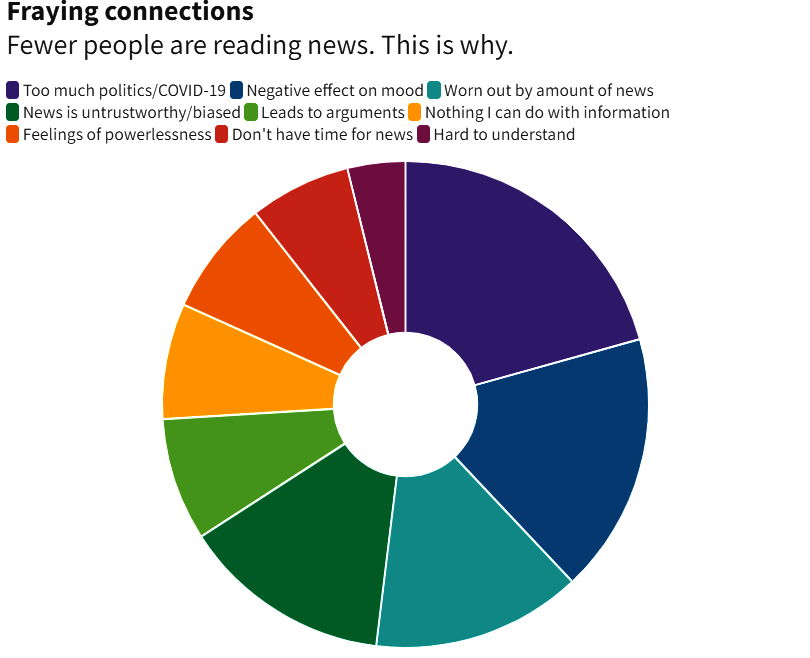Governance
Digital News Report 2022
- 16 Jun 2022
- 5 min read
For Prelims: Digital News Report, 2022
For Mains: Digital News Report, 2022, Government Policies and Interventions
Why in News?
Recently, Digital News Report 2022 was released by Reuters Institute.
- The Reuters Institute for the Study of Journalism is dedicated to exploring the future of journalism worldwide through debate, engagement, and research.
- This year’s report, the eleventh overall, is based on a survey conducted by YouGuv, a British market research and data analytics firm, in January/February 2022 through online questionnaires.
- It covers 46 markets in six continents.
What are the Key Highlights of the Report?
- Trust Issue:
- People are trusting news content less and less.
- Decline in Traditional News Media:
- Consumption of traditional news media declined in nearly all the countries surveyed.
- Increase in Consumers who Avoid News:
- The proportion of news consumers who avoid news has risen sharply across countries, with the report describing the phenomenon as “selective avoidance”.
- Growth in Digital Subscription:
- Despite small increases in the proportion of people willing to pay for online news (mostly in richer countries), the growth in digital subscriptions for news content seems to be leveling off.
- Access Way:
- The smartphone has become the dominant way in which most people first access news in the morning.
- While Facebook remained the most-used social network for news, it is TikTok that has become the fastest-growing network, reaching 40% of 18-24-year-olds, with 15% using the platform for news.
What is ‘Selective Avoidance’ of News?
- About:
- Even though the majority of people remain engaged with news, the report finds that a growing minority are increasingly rationing or limiting their exposure.
- The report calls this behavior “selective avoidance”.
- The avoidance of news has doubled in Brazil (54%) and the U.K. (46%) since 2017.
- Even though the majority of people remain engaged with news, the report finds that a growing minority are increasingly rationing or limiting their exposure.
- Reasons for the Avoidance:
- Due to the repetitiveness of the news agenda — especially around politics and Covid-19 (43%)
- Worn out by the news (29%)
- Trust issues (29%)
- Negative effects on mood (36%)
- Leads to arguments (17%)
- Led to feelings of powerlessness (6%)
- No time for news (14%)
- Hard to understand (8%)
What about Preferred Modes of News Consumption?
- Across markets and age groups, text is still king when it comes to news consumption.
- However, younger audiences were more likely to say they watch the news.
- In India, 58% mostly read the news while 17% mostly watch it.
- On the other hand, the comparable figures for Finland, which has a historic pattern of high newspaper consumption, was 85% and 3% respectively.
What about the Main Gateway to News?
- Smartphone being the preferred mode of access, direct access to apps and websites were becoming less important over time, giving ground to social media, which is becoming more important as a gateway to news due to its ubiquity and convenience.
- At an aggregate level, with social media preference (28%) surging ahead of direct access (23%)” notes the report.
What about the Trends in India?
- India is a strongly mobile-focused market.
- 72% of the survey respondents accessed news through smartphones and 35% did so via computers.
- Also, 84% of the Indian respondents sourced news online, 63% from social media, 59% from television, and 49% from print.
- YouTube (53%) and WhatsApp (51%) were the top social media platforms for sourcing news.
- India registered a small increase in the level of trust, with 41% trusting news overall.
- A minority of respondents - 36% and 35% - felt that legacy print brands and public broadcasters lacked undue political influence and business influence, respectively.





